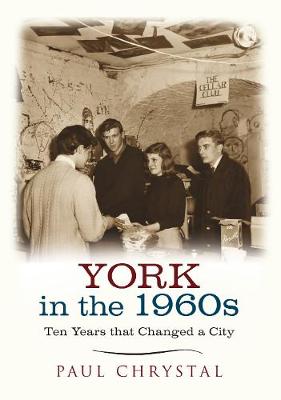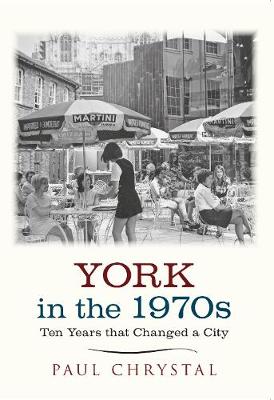Ten Years that Changed a City
3 total works
The 1950s in York was a decade of reconstruction and regeneration after the depredations of the Second World War. This book charts these changes to give a unique picture of the city that gradually emerged over the years 1950-59. It covers developments in the railway and confectionery industries that provided the foundation for growth and prosperity - the changing face of trade on the high street; the growth of tourism; the role of the media in the city; music, cinema, theatre and entertainment; schools, colleges and hospitals in the city; and York City FC. Using archive material from The York Press, York City Archives and the prestigious Borthwick Institute at the University of York, this book provides a unique history of York in an often forgotten decade, forgotten even though it provides the bedrock for much of what we see today.
This is the second volume in a unique and exciting series on the history of York. York in the 1960s provides an account of York life during a definitive decade. Ten years in which the city emerged from the greyness of the largely derelict 1950s into a technicolour world of personal freedom and growing disposable incomes, allowing some to spend that money on newly available labour-saving devices, televisions, cars and holidays.
Crucial to York in the 1960s was the ground-breaking Esher Report and the long-overdue University of York. Esher shaped today's city; the university's contribution to the city's social, cultural, educational and scientific fabric was, and remains, inestimable. York in the 1960s will please and satisfy curiosity whether you grew up here then, whether you have left and want to rekindle your childhood and teenage memories, or whether you are a child of the twenty-first century curious to know what was going on in that exuberant decade.
Crucial to York in the 1960s was the ground-breaking Esher Report and the long-overdue University of York. Esher shaped today's city; the university's contribution to the city's social, cultural, educational and scientific fabric was, and remains, inestimable. York in the 1960s will please and satisfy curiosity whether you grew up here then, whether you have left and want to rekindle your childhood and teenage memories, or whether you are a child of the twenty-first century curious to know what was going on in that exuberant decade.
This is the third volume in a unique and exciting series on the modern history of York. With the dawning of the 1970s the city underwent seismic changes that saw it become one of Europe's foremost historical and cultural cities. Tourism had come to stay, with such major events as the pedestrianisation of Stonegate, the opening of the world-famous National Railway Museum, the momentous excavations in Coppergate, which paved the way for the celebrated Jorvik Viking Centre, and the opening of the Minster undercroft to the public. Join Paul Chrystal as he describes and depicts all of these and many more fascinating details about York during this pivotal decade in the city's splendid history.


